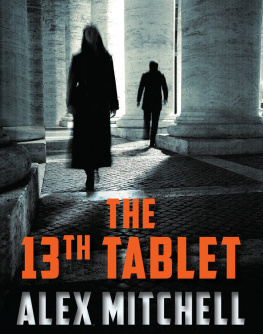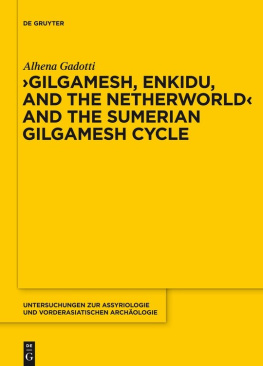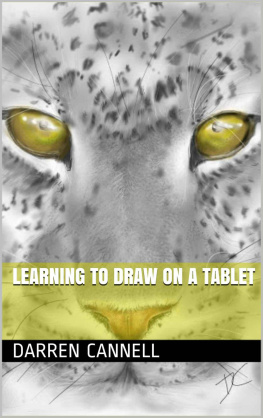CONTENTS
Gilgamesh Gilgamesh A New Verse Rendering by Stanley Lombardo Introduction by Gary Beckman Hackett Publishing Company, Inc.
Indianapolis/Cambridge Copyright 2019 by Hackett Publishing Company, Inc. All rights reserved Printed in the United States of America 22 21 20 19 1 2 3 4 5 6 7 For further information, please address Hackett Publishing Company, Inc. P.O. Box 44937 Indianapolis, Indiana 46244-0937 www.hackettpublishing.com Cover design by Brian Rak Interior design by Laura Clark Composition by Aptara, Inc. Library of Congress Cataloging-in-Publication Data Names: Lombardo, Stanley, 1943 translator. | Beckman, Gary M., writer of introduction.
Title: Gilgamesh / translated by Stanley Lombardo ; introduction by Gary Beckman. Other titles: Gilgamesh. English. Description: Indianapolis : Hackett Publishing Company, Inc., [2019] | Includes bibliographical references. Identifiers: LCCN 2018036034 | ISBN 9781624667732 (cloth) | ISBN 9781624667725 (pbk.) Subjects: LCSH: Epic poetry, Assyro-Babylonian. Classification: LCC PJ3771.G5 E5 2019 | DDC 892/.1dc23 LC record available at https://lccn.loc.gov/2018036034 ePub3 ISBN: 978-1-62466-793-0 Homer, Iliad .
Translated by Stanley Lombardo. Introduction by Sheila Murnaghan. Homer, Odyssey . Translated by Stanley Lombardo. Introduction by Sheila Murnaghan. Virgil, Aeneid .
Translated by Stanley Lombardo. Introduction by W. R. Johnson. {v} Contents The page numbers in curly braces {} correspond to the print edition of this title. {vii} The hero Gilgamesh was well known throughout the Near East during the first millennium BCE.
In addition to the copies of his adventures included in the libraries of Assyrian and Babylonian scholars and kings, many prosperous men proudly carried personal (cylinder) seals depicting the battle of Gilgamesh and his faithful companion Enkidu with the monstrous Bull of Heaven. Outside of his Mesopotamian homeland, references to Gilgamesh appear in the Aramaic-language Book of Giants preserved among the Dead Sea Scrolls of Qumran in Palestine (second century BCE) and a bit later in the tract On the Nature of Animals by the Greek writer Aelian (second century CE). Nonetheless, with the eclipse of the Mesopotamian literary tradition by that of Greece and Rome, completed by the first century of the Common Era, Gilgamesh had largely been forgotten until the rediscovery of the cultures of ancient Assyria and Babylonia less than 200 years ago. The Rediscovery of Mesopotamia and Its Culture The mid-nineteenth century CE witnessed the beginnings of a new stage of the rivalry between France and England to establish expansive empires and to extend their political and cultural influence throughout the world. In the declining Ottoman Empire, which in this period still included Mesopotamia (modern Iraq and northern Syria), the pioneers of European imperialism were the British and French diplomats stationed in the Sultans provincial capitals. Among these men were the French consul Paul-mile Botta (18021870), who served in Mosul (in the north of todays Iraq).
In addition to his regular duties, Botta began to investigate the nearby artificial mounds (tells) that turned out to contain the ruins of the capital cities of ancient Assyria. From 1842 to 1844 he dug at Khorsabad, uncovering the remains of ancient Dur-Sharrukin, Fortress of Sargon, the royal city of Sargon II (722705 BCE), a ruler of Assyria mentioned in the Hebrew Bible. The renown accruing to the French proto-archaeologist prompted the British to dispatch their own Austen Henry Layard (18171894) to Mosul, who from 1845 through 1847 excavated the giant mound of Kynjik, situated directly across the Tigris River from the Ottoman provincial center. Here {viii} he found what had once been the famous city of Nineveh, whose destruction was foretold in the biblical books of Nahum and Zephaniah. Perhaps Layards most important discovery at Nineveh was the library of the last significant king of Assyria, Ashurbanipal (668ca. 627 BCE); the contents of thousands of clay tablets and fragments were packed up and shipped to the British Museum in London.
The excavations of Botta and Layard, although clumsy and destructive by todays archaeological standards, marked the beginning of the study of ancient Mesopotamia and the surrounding nations whose civilizations developed under its influence. The Cuneiform Writing System The Assyrian documents dispatched to London constituted the first substantial body of material inscribed in the cuneiform script that became available for investigation by Western scholars, and therefore the entire enterprise of studying ancient records on clay has been called Assyriology up to the present day, even if only a portion of the relevant material was in fact produced in Assyria. It is important to note that cuneiform (Neo-Latin wedge-shaped [script]) is a writing system and not a language. Invented in the closing centuries of the fourth millennium BCE in southern Mesopotamia to keep records in Sumerian, by ca. 2600 BCE cuneiform had been adapted to express the Semitic Akkadian language, whose major later northern and southern dialects were Assyrian and Babylonian, respectively. But cuneiform was also borrowed to write non-Mesopotamian tongues completely unrelated to either Sumerian or Akkadianor indeed to one another.
These included the IndoEuropean languages of ancient Anatolia (modern Turkey), most prominently Hittite, as well as Elamite at home in southwestern Iran and Hurrian in northern Syria and easternmost Anatolia. This situation might well be compared to the use today of the Latin alphabetic script, with appropriate modification, to express languages as different as English, Turkish, and Vietnamese. But whereas the Latin script has been in continuous use since its invention ca. 550 BCE, in the 1840s no one had read a cuneiform text since the late first century CE. At least that is when the latest known (Babylonian) inscription in this type of writing was produced. Therefore, cuneiform had first to be deciphered to enable the recovery of the wealth of historical, economic, and cultural information preserved on the clay tablets.
Several schoolteachers, {ix} university professors, and gentleman scholars, primarily from England, Ireland, France, and Germany, working independently, undertook this daunting task. The tablets Layard sent to London proved crucial in this process by providing sufficient material for thorough study. By 1857 cuneiform had been largely deciphered, as demonstrated by a test in which four of the leading students of the script were each presented with an Assyrian royal inscription previously unknown to them and then independently produced nearly identical English translations. A few years later, the British Museum engaged a young apprentice banknote engraver and amateur cuneiform enthusiast, George Smith (18401876), to help sort and catalogue the innumerable tablet fragments held by that institution. During the course of his duties he kept up with progress in the decipherment of cuneiform, ultimately himself becoming an expert on the script. (We now realize that what Smith had found was an exemplar of Tablet XI of the version of the Gilgamesh Epic translated in this volume.) Smiths widely attended lecture concerning this discovery was a sensation, followed in 1876 by the publication of his The Chaldean Account of Genesis . (We now realize that what Smith had found was an exemplar of Tablet XI of the version of the Gilgamesh Epic translated in this volume.) Smiths widely attended lecture concerning this discovery was a sensation, followed in 1876 by the publication of his The Chaldean Account of Genesis .
In response to public enthusiasm for his seeming confirmation of the veracity of Christian scripture, Smith himself was sent out to Ninevehfirst under the auspices of a popular newspaper and later under those of the British Museum itselfto search for further relevant material. On the third of these expeditions he was stricken with dysentery and died near Aleppo. Nonetheless, other scholars have continued Smiths work on the reconstruction of the entire text of the Epic, with major (partial) editions appearing in 1884 and 1930. By the time of Andrew Georges most recent comprehensive edition (2003), scholars had recovered around 2,450 of an estimated original 3,000 lines. Hopefully, with future excavation and discovery, we will eventually possess the entirety of the Epic, but we certainly already have the major portion and should expect no major textual surprises to challenge our philological and literarycritical interpretations. Even in its incomplete form, the Epic has served as inspiration for artists from the nineteenth century to the present, providing the basis for numerous literary retellings, psychoanalytical explorations, and even operas.














